The Canadian Brass is coming to town this week! I had the great pleasure of working a few times last month with the newest member of the quintet, horn player Eric Reed. Eric and I have known each other since he moved to New York about five years ago. Since I hadn’t seen him in a couple years, I was eager to get caught up with him on all of his experiences – first of all, with The Academy, but also to hear about his new adventures with The Canadian Brass, so I thought I’d ask him to subject himself to an interview for my blog readers. 🙂
So far, I’ve had the honor of interviewing Julie Landsman, someone who has already had a complete career (and she continues to play!), and Chris Komer, who is smack in the middle of his career. So I find it interesting to get the perspective of someone who is near the beginning of his career, to see what themes are developing in his professional life, and to find out what is important to him. What emerged, in this conversation at least, was balance – balancing performance with education, interaction, and community engagement; as well as finding balance in one’s own life – making space for friends, family, and down time around the busy-ness of a very full performance schedule. I hope you will enjoy reading about Eric’s musical path so far and learning about his experiences!
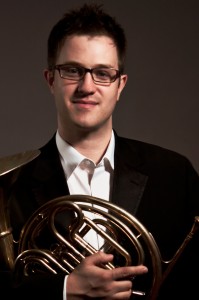 Hometown: Evansville, IN
Hometown: Evansville, IN
Schools: Rice University and The Juilliard School
Teachers: Roger Kaza, William VerMeulen, Julie Landsman
Places lived since school: Miami Beach (three years with New World Symphony), Portland (Oregon Symphony), New York City (freelancing for five years)
First of all, tell me how you got started on the horn!
I took piano lessons before starting horn, but horn was my first brass instrument. I had an uncle that played horn, and since I could make a sound and actually hold it, my band director was thrilled and decided for me.
What was the process for you of deciding to play the horn for a living?
In high school, I had a lot of other interests, and did consider other paths, including architecture and mathematics. In the end, I chose to go into music because I was sure I would enjoy a life in music – in other words that it would be FUN – and because I was given the great opportunity to study music at Rice University. It wasn’t until four years later, on the grounds of Tanglewood that I knew for sure that I HAD to play horn. I played principal horn on Brahms 1st Symphony with Seiji Ozawa in the Shed for 15,000 people. My dad was there, and the performance was later on the radio…it was an amazing experience – a major one for me at the time – and still brings back a lot of emotion.
Can you tell me about your main teachers and some of the highlights of studying with them?
(Where to start here….)
I was fortunate to have some great teachers when I was young that prepared me very well for college: Christopher Smith and Lorraine Fader, both in Evansville.
I feel lucky to have had the opportunity to study with Roger Kaza for a year at Rice. He has an amazing musical mind, and his sound is still inspiring to think of. A big highlight was learning the Brahms Trio, and the shock of seeing Roger sit down and play the piano part with me on horn. I think he said he learned the piano part first! Must be nice to have those skills. He also designed and built a working “Horn Jeopardy” board. So cool!
Bill Ver Meulen was the reason I went to Rice, and is the most motivational teacher I’ve ever had. His method, his swagger and his very direct problem-solving attitude for teaching has undeniable results. The highlights of studying with him always came unpredictably – when he got me to do things I didn’t know or think I could actually do. He’s that kind of teacher.
Julie Landsman is such a thoughtful and nurturing teacher, and treats her students as her children. As an only child and definite momma’s boy, I felt an instant connection with her personality, approach and style. She really kicked my butt at Juilliard, and gave me the tools for becoming a much more solid player. Because she wants to really understand and know how her students think and learn, nothing gets by her, I could hide nothing. This is a huge credit to her and her success as a teacher. I learned so much about myself studying with Julie.
Perhaps this isn’t a fair question, (and I usually avoid grand summations!) but if you had to encapsulate something about each of your teachers and what they taught you, what would that be?
From Roger: to experiment and delve completely into what I’m working on. From Bill: that I am truly capable of anything I decide to do. (This is not an egoist statement – he inspires that kind of confidence!) And from Julie: to listen to myself – to listen to everything – my articulation, sound, heart, and everything in between.
I would love to hear more about your experiences at The Academy. For my blog readers who aren’t familiar with The Academy, it is a two-year fellowship program of Carnegie Hall and the Juilliard School that takes young musicians, who are usually finished with their training and near the beginning of their careers, and gives them performance opportunities while training them in education and community outreach. It’s a stellar program, and you can find out more by going to www.carnegiehall.org/Academy. So, Eric, what was your schedule like while you were with The Academy?
The teaching commitment was thirty-six full days for the school year, which amounted to about one day a week at my school. The week before a concert (there were eight or nine) was filled with rehearsals, and we generally had one day of professional development sessions per week. These sessions were like seminars, and were on a variety of topics from personal mission/vision statements, to programming or public relations.
Where were you teaching? Can you tell me about the kids you worked with and what that was like?
I taught at P.S. 13 elementary school in Elmhurst, Queens for two years. I worked with the wonderful band director there, Mr. Anton Gary and I worked with about 100 different kids, in third, fourth and fifth grades in band and chorus.
The kids were (are) amazing kids. I feel so lucky to have been assigned such a great school as my “residence” for the two years. It was very challenging at first speaking in front of a group of kids. They see straight through insecurity! But it was so rewarding getting to know them, and seeing the looks of inspiration on their faces, while getting to know myself as well.
When I joined The Academy, I thought the chamber music performances would be the main experience, the most valuable and best part. And they were really great! I made some great friends and played some very rewarding concerts with them. But the teaching and the connections I made with those young people in Queens was BY FAR the most rewarding part. Like I said, I learned way more about music and life and myself from them than any other aspect of the program. Especially when we took groups into the schools to give interactive performances. Writing a script and planning a presentation that would be an enjoyable and educational experience for the kids was challenging and rewarding like nothing else.
One of the things I’ve noticed is that, in so many of the things you do, there is an educational component, and a very interactive component – with The Academy, perhaps when you were at New World, and now with the Canadian Brass. Is interacting with audiences and educating audiences and children (as the case may be) something that you naturally enjoy and find easy? Maybe you are a natural, but I know for myself, though I love teaching, and I enjoy interacting, it isn’t particularly natural for me to be able to be verbal AND perform at the same time. How have you adapted to this? Because my sense is that it is becoming an inherent part of what a lot of classical musicians must do now – educating and performing at the same time. What are your thoughts about this, and about interacting with audiences in general?
Big question, big answer! I am most certainly not a natural verbal communicator with audiences. I envy my friends who are! But I have learned a great deal from those same friends, and from all the opportunities you mentioned – New World Symphony, The Academy and Canadian Brass. I would say the work I did in The Academy broke down most of my personal barriers. The Interactive Performances I mentioned before were especially helpful for me. In two years in the program, I gave about thirty of these concerts, in at least ten different New York City public schools. I only wish there had been more! Obviously, the seventy-two full days of instruction gave me the opportunity to REALLY get comfortable. I recognize the difficulty most performers have doing this kind of work (because I am one of them!) but have found a passion for education and outreach, and have come to think of it as one of the most important things artists can do to improve themselves. Especially as more performance-based groups look at the candidates’ experience in outreach/education, we must do this work to stay marketable! Never mind the monumental and so often talked-about idea of “building our future audience.” (Which is obviously a very important concern…) It’s all about the kids, really. Seeing them “get it,” and then wanting to know more. Their curiosity and lack of bias is addictive.
Canadian Brass has made its name interacting with audiences in a very unique and effective way. Chamber music itself demands a degree of communication and interaction between the players, which transfers easily to the audience and affects their enjoyment. I love that! There is no shortage of opportunity to communicate with one’s audience, and that’s one of the greatest parts of playing with Canadian Brass. We’re always talking about how to interact with the audience in a more effective way. And the audience response is so often overwhelming – literally!
What is your advice for those looking to improve their skills in interacting with audiences, public speaking, or educating?
There is no substitute for experience. The best way to improve these skills is to DO them.
One great way to get this experience is by volunteering at a school, community center or church.
Aside from actually doing this kind of work to improve at it, another way that I’ve improved greatly is by watching my friends who are “naturals” in action. And then copy them! Not exactly of course – you want it to be YOUR personality that shines through. That’s really what it’s all about in interactive performing. Be yourself. (And talk loudly!) As an aside, my most inspirational friend in this area is Peter Seymour, bassist in a group called Project Trio. He is a natural educator, and is a joy to watch. www.projecttrio.com.
Now Canadian Brass takes that to a whole other level in a certain way. There’s so much theater involved, right?
Yeah! I travel to every show with an old plastic marching band hat (no plume…) for our version of Carmen. I play the attractive Canadian soldier Don Hose, eh? ….
We move around the stage and even into the audience on a lot of our numbers, and do a fair amount of memorizing, which is a great way to instantly increase the level of interaction. With no stand (barrier) between you and the audience, they can see your movements and expressions, and you can see their reaction, which creates more expression and so on.
Do you cycle through different shows with CB? If so, how many do you currently have going?
Ah, the repertoire. It is literally astounding the amount of repertoire we have to choose from, and as the new guy, it’s been an uphill battle making sure I’m on the same page – no pun intended. That being said, we do stick to the same major pieces for the most part. We have a “standard program” and fill the rest in with a large assortment of smaller works. Brandon does most of the programming, with some input from us. The most challenging thing regarding repertoire has been the different types of shows. There’s the band show, the orchestra show, the choir show, and there was the Christmas show – and variations on all of them! I have an iTunes playlist called “CB Study” and it has 62 tracks in it – not counting any Christmas music!
I’d say about half of what we do now is memorized, although we’d like to increase that percentage. Our intro (Just a Closer Walk with Thee), the encores, and Carmen are memorized, with varying amounts of choreography. Which encore we play is often decided immediately before we play it, which really keeps me on my toes!
What are the most important things you have found necessary to do to sort of stay on top of it all, with the busy traveling schedule, the demanding performances, and organizing the rest of your life and freelance career back in New York?
The most important thing is rest. Obviously, preparation and being organized with my schedule and music are also really important too. I’ve also gotten really into meditation, which continues to be a literal yet subtle life-changer. Also important are exercise and healthy eating (which is especially difficult on the road). I’m a strong believer in balance – I make sure to give myself down time and light days surrounding the busy ones. Spending time at home with my fiancee Sarah, as well as going out and enjoying New York City with my friends are very important to me. These are the reasons we work so hard, right?!
I have been making it a habit to ask this question in my interviews: how do you feel about the state of the arts these days and the state of classical music in our culture? I often feel like life and technology and society are all moving away from the deeper experience of classical music. What are your thoughts about this?
I’ve always thought that there will eventually be some sort of renaissance. Maybe it’s wishful thinking, but I think music and the arts are an innate part of humanity that people will always need or at least feel connected to. It is troubling what’s going on these days, for sure. Any lack of funding is no joke. Money is necessary. But there’s something continuous about culture and the arts that flows beneath (or above?) all of the concern about money. Even with no money, a person can make music, and people can listen if they want. The real issue in classical music right now is finding ways to make people listen and feel involved. It goes back to interacting! It’s much harder for an orchestra to interact with an audience, and there have been a lot of brilliant ideas that ultimately fall short at that task. There are a lot of classical musicians, especially in orchestras, that have no interest in interacting with their public, developing new audiences, or even playing new types of music. And I think that’s what has to change for us to turn this thing around. The people doing the hiring need to look at more than just chops when they fill a spot in their group. The job description of a classical musician has changed, and as more educational institutions get hip to that, we’ll see more people in orchestras wanting to take action and do different things.
Thank you so much for sharing all of your thoughts and experiences with us, Eric! If you live in Philadelphia, the concert is at Temple University on this Tuesday night, April 26. Tickets are free and can be reserved at: http://canadianbrass.eventbrite.com/
Resources:
The Academy: www.carnegiehall.org/Acadmy/
The Canadian Brass: www.canadianbrass.com
Check out Eric’s blog about the Canadian Brass’ trip to China: http://www.canadianbrass.com/#p=page-2011_02_china2011_
The Website of Eric’s inspirational friends, Project Trio:

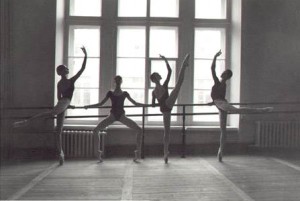 Last week I played with the ballet. For those who know me, it is no secret that I love dance. I even took some beginner ballet classes last year so that I could experience it first-hand. I had a wonderful teacher here in Philadelphia who somehow managed to weave dance history, theory and philosophy in with the physical movements that he taught us, and it was enlightening!
Last week I played with the ballet. For those who know me, it is no secret that I love dance. I even took some beginner ballet classes last year so that I could experience it first-hand. I had a wonderful teacher here in Philadelphia who somehow managed to weave dance history, theory and philosophy in with the physical movements that he taught us, and it was enlightening!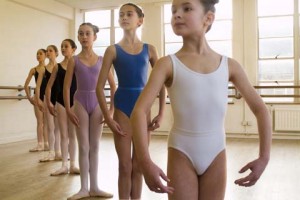 The very first thing that I learned in ballet class was correct stance – the neutral posture from which your body moves and where your body returns. Everything is specified – down to the arrangement of the fingers, the expression on the face, and even the direction of the gaze of the eyes. When these details have been tended to, what you get is the embodiment of poise.
The very first thing that I learned in ballet class was correct stance – the neutral posture from which your body moves and where your body returns. Everything is specified – down to the arrangement of the fingers, the expression on the face, and even the direction of the gaze of the eyes. When these details have been tended to, what you get is the embodiment of poise.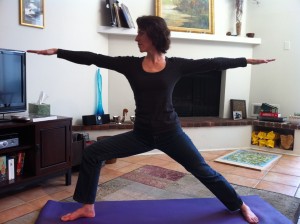 The idea that what happens in the body has an effect on the emotions and mental state is an integral part of certain approaches to yoga and one of the things I love most about it. For example, what happens when you place yourself in a particular yoga pose is that you are “putting on” outwardly the qualities that can stand to be exercised and warmed-up on the inside. So for instance, when I am in warrior pose, legs strong and rooted, chest open, radiating out from my center through my arms and legs, soft but focused gaze – these physical actions can nudge my mind and emotions towards the corresponding inner qualities. In the case of warrior pose, these might be grounded-ness, an open heart, energy, and strong intention.
The idea that what happens in the body has an effect on the emotions and mental state is an integral part of certain approaches to yoga and one of the things I love most about it. For example, what happens when you place yourself in a particular yoga pose is that you are “putting on” outwardly the qualities that can stand to be exercised and warmed-up on the inside. So for instance, when I am in warrior pose, legs strong and rooted, chest open, radiating out from my center through my arms and legs, soft but focused gaze – these physical actions can nudge my mind and emotions towards the corresponding inner qualities. In the case of warrior pose, these might be grounded-ness, an open heart, energy, and strong intention.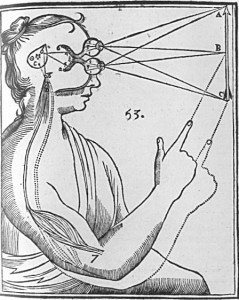 Seeing is our awareness of what is – the depth with which we experience this moment. Vision (in my definition today) has to do with the images that we hold in our mind and that flow through us. They shape how we string our moments together.
Seeing is our awareness of what is – the depth with which we experience this moment. Vision (in my definition today) has to do with the images that we hold in our mind and that flow through us. They shape how we string our moments together.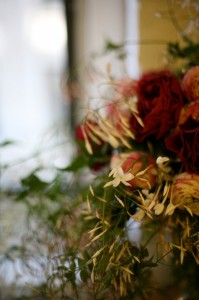 And the bird called, in response to
And the bird called, in response to
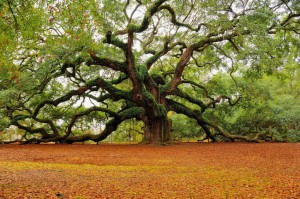 Nearly every major religion or thought system in the world has a period of time dedicated to lean times, fasting, contemplation of suffering, and transitions from life to death (or from death to life). There is the Christian season of Lent (which we are in right now), the Muslim month of Ramadan, the O-higan time period around the equinoxes in Japanese Buddhism, etc. That this season for reflecting on the more difficult things of life exists across religions and cultures emphasizes that these non-rosy times of life are very much a part our shared human existence and deserve our respect and contemplation.
Nearly every major religion or thought system in the world has a period of time dedicated to lean times, fasting, contemplation of suffering, and transitions from life to death (or from death to life). There is the Christian season of Lent (which we are in right now), the Muslim month of Ramadan, the O-higan time period around the equinoxes in Japanese Buddhism, etc. That this season for reflecting on the more difficult things of life exists across religions and cultures emphasizes that these non-rosy times of life are very much a part our shared human existence and deserve our respect and contemplation. This is a time of year that is full of potential. Winter seems to be over, mostly, and spring has started to show hints of what lies ahead in the little buds on the trees, but it’s still raw outside. We know that the blooms are coming and we know we will have warmer weather, but we just can’t feel it yet – on most days. For many students of music, this is also a time of feeling the potential of what lies ahead but not knowing exactly HOW everything will unfold. They are done with their auditions and waiting to hear back from their school of choice, or summer festival of choice, or waiting to get the details of aid packages.
This is a time of year that is full of potential. Winter seems to be over, mostly, and spring has started to show hints of what lies ahead in the little buds on the trees, but it’s still raw outside. We know that the blooms are coming and we know we will have warmer weather, but we just can’t feel it yet – on most days. For many students of music, this is also a time of feeling the potential of what lies ahead but not knowing exactly HOW everything will unfold. They are done with their auditions and waiting to hear back from their school of choice, or summer festival of choice, or waiting to get the details of aid packages.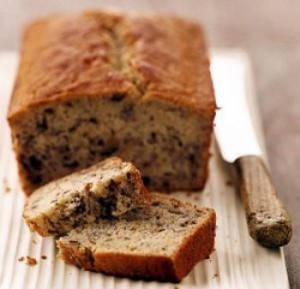 My husband says: Bake banana bread. And I tend to agree! That is how we often deal with it, actually – taking time for the little enjoyable things of life. We are making banana bread as I write this. (Full disclosure: HE is making banana bread as I write this).
My husband says: Bake banana bread. And I tend to agree! That is how we often deal with it, actually – taking time for the little enjoyable things of life. We are making banana bread as I write this. (Full disclosure: HE is making banana bread as I write this).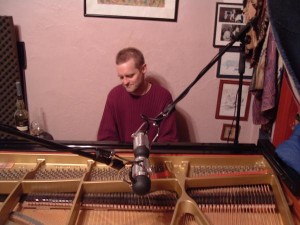
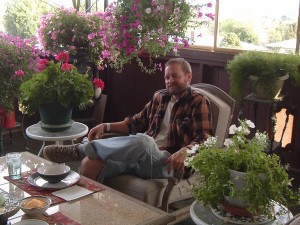
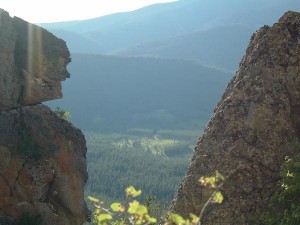
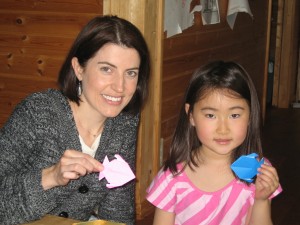
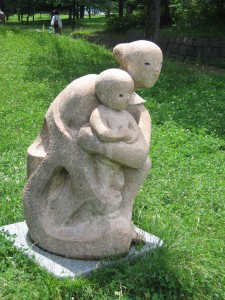

 There aren’t many horn players out there who are as revered as Julie Landsman. Recently retired from 25 years as principal horn of the Metropolitan Opera Orchestra, she continues to teach at the Juilliard School, and was recently in Philadelphia doing some visiting teaching at the Curtis Institute and playing extra with Philadelphia Orchestra on Strauss’ Ein Heldenleben. She said she is having the time of her life playing 6th horn and playing some low notes for once! My husband and I took the opportunity of her visit to have dinner with her, and she graciously agreed to allow me to pull out my cassette recorder and tape an interview with her.
There aren’t many horn players out there who are as revered as Julie Landsman. Recently retired from 25 years as principal horn of the Metropolitan Opera Orchestra, she continues to teach at the Juilliard School, and was recently in Philadelphia doing some visiting teaching at the Curtis Institute and playing extra with Philadelphia Orchestra on Strauss’ Ein Heldenleben. She said she is having the time of her life playing 6th horn and playing some low notes for once! My husband and I took the opportunity of her visit to have dinner with her, and she graciously agreed to allow me to pull out my cassette recorder and tape an interview with her.